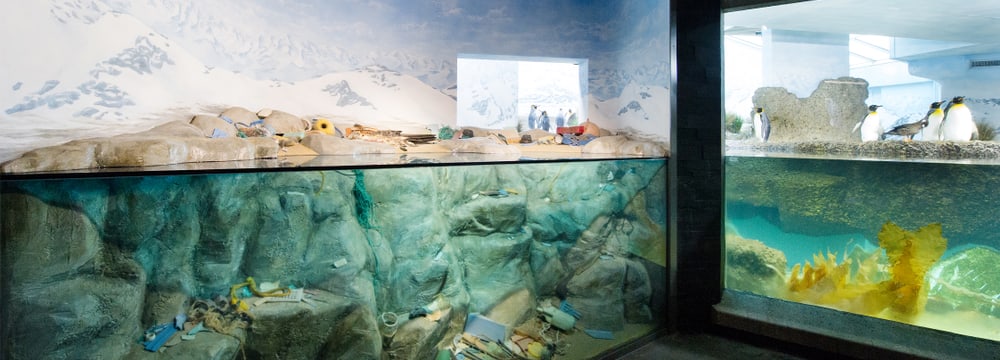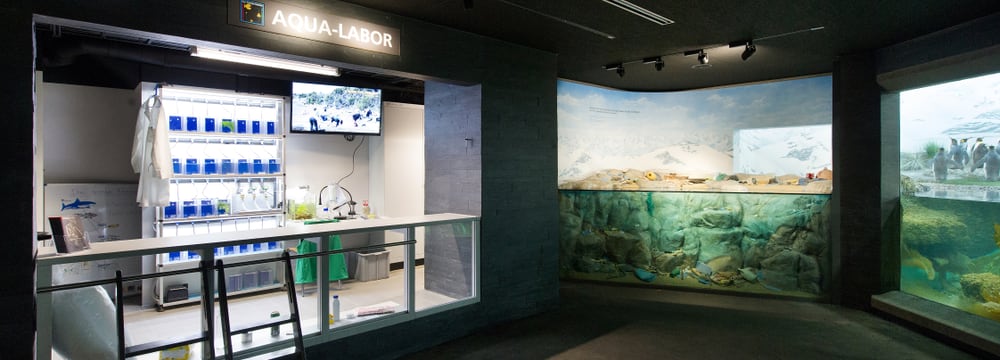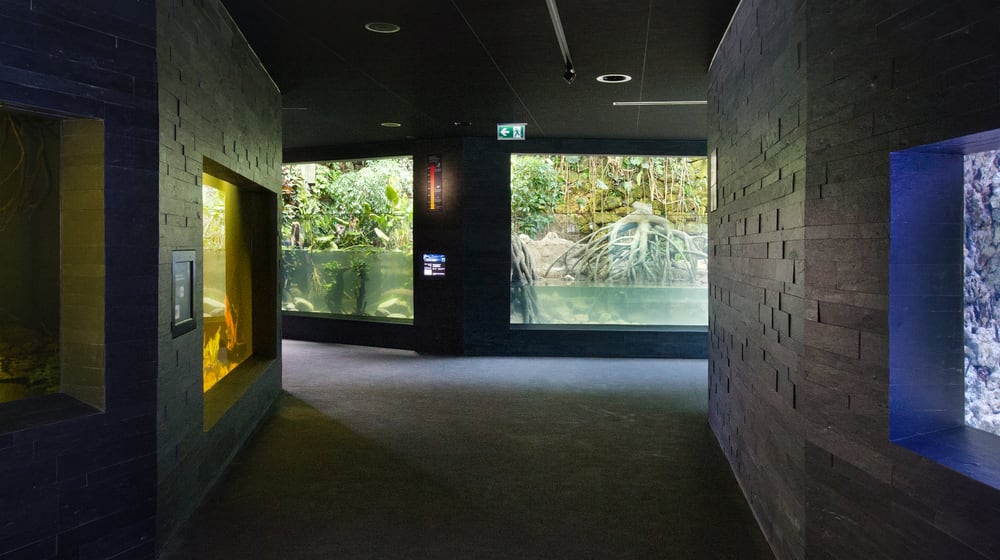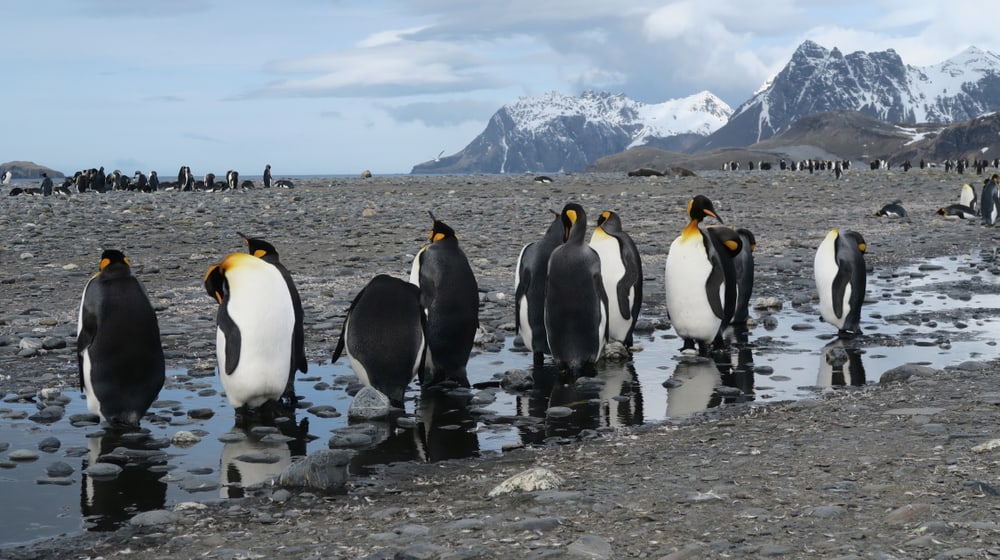Food, Glorious Food
The content of the exhibition «Food, Glorious Food» is the history of eating as the basis of life and how humans intervene in natural cycles. This also includes the topic of marine pollution through waste and microplastics and the massive problems this causes for the habitat and its inhabitants. The exhibition includes a staged seashore full of waste, an interactive aqua lab and a small cinema.
Plastic waste has become an immense problem for the oceans. In Antarctica - far from civilization - marine researchers discovered that 80 percent of the seabirds they found had plastic waste in their stomachs. How is this possible? Seabirds like albatrosses eat squid, fish, krill, and carrion - whatever floats on the ocean surface. For seabirds, basically everything is edible and so they have never learned to avoid harmful objects. That's why garbage ends up in their stomachs. Sharp plastic pieces cause internal injuries. Smaller pieces fill the stomach and remain there. The animals feel satiated and starve to death on a full stomach.
Meanwhile, huge swirls of garbage float in the sea. There is hardly a region left that is not affected by the gigantic environmental pollution. The culprits, it is believed, are quickly found: The poor countries of the South, which have no proper garbage collection, or cargo ships that carelessly dispose of garbage in the sea. Hardly anyone thinks that a landlocked country like Switzerland is also largely responsible for the problem. But we are.
On the one hand, our rivers also carry waste into the sea - the Rhine, for example, is the most heavily polluted river in the world with plastic and microplastics. And on the other hand, even properly disposed of waste finds its way into the sea.
Microplastics consist of tiny particles that are added to cosmetics, for example. Wastewater treatment plants are unable to fully capture these particles. They thus end up unhindered in rivers and ultimately in the sea. The coarse waste in the sea also breaks down into smaller and smaller particles due to ageing, wind and sun. Once the particles have reached the size of plankton, fish, as well as mussels and other invertebrates, eat the microplastics. Toxins contained in them dissolve and accumulate in the tissues of the animals. Sooner or later, these marine animals end up on our plates. With health consequences for mankind as well.
In the aqua lab, zoo staff and members of the volunteer team (FTZ) show visitors exciting background information about the food. Many objects are available for viewing. Under the binoculars, tiny creatures such as zooplankton, small crustaceans and other aquatic animals that are at the beginning of the food chain become visible. Using skulls and dentures, visitors can compare larger underwater hunters. In addition, the aqua lab also addresses the problems of plastic waste and overfishing.
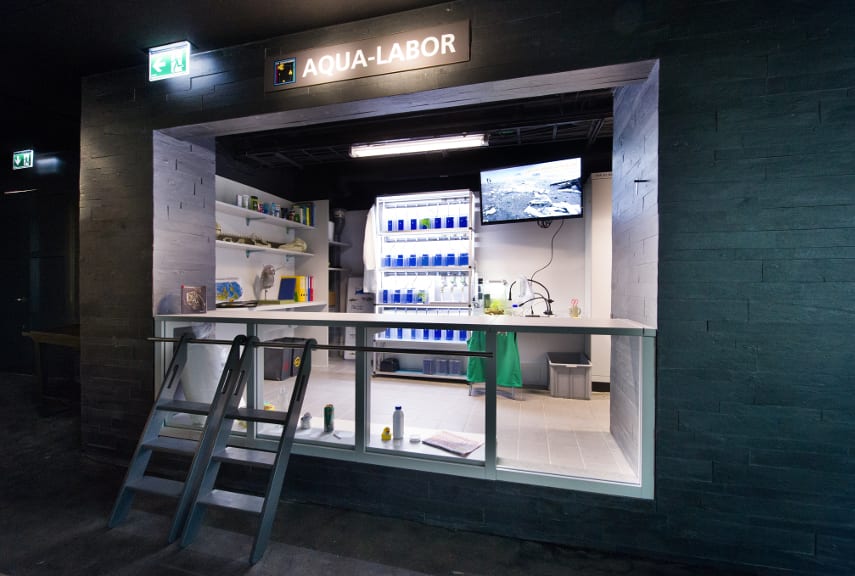
Interactive aqua lab in the aquarium of zoo Zurich.
Four short films are shown in the small cinema in the aquarium: the ARD documentary «Müllkippe Nordsee» from Helgoland, an animated film on the subject of microplastics, an animated film on the subject of overfishing and a film on the nature conservation project ART by zoo Zurich. In between, there are short humorous commercials on the subject of littering.
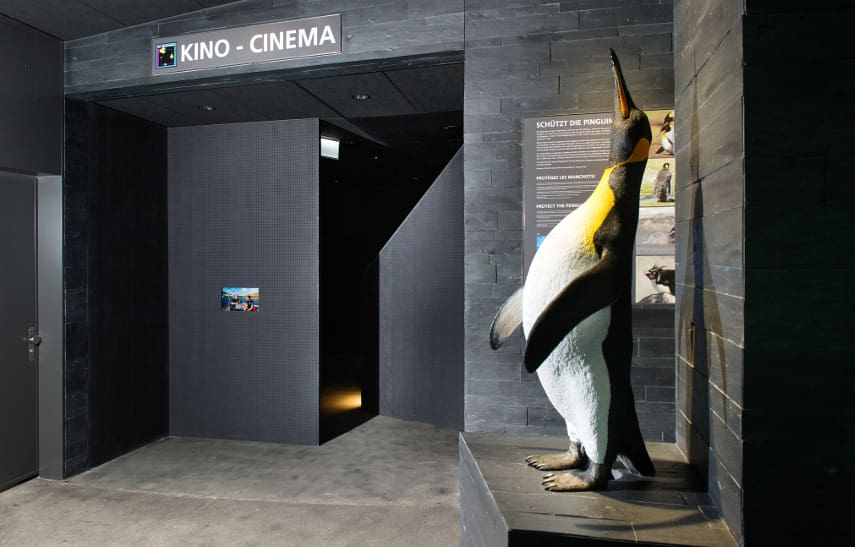
The small cinema in the aquarium of Zurich Zoo.
